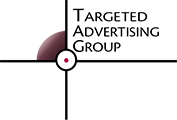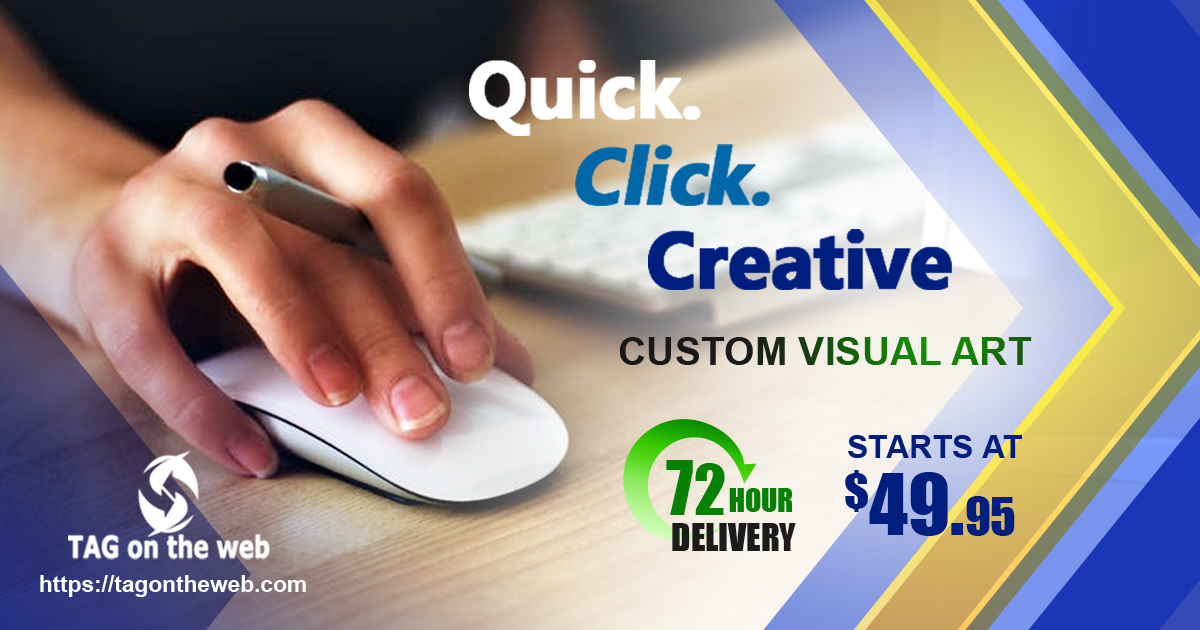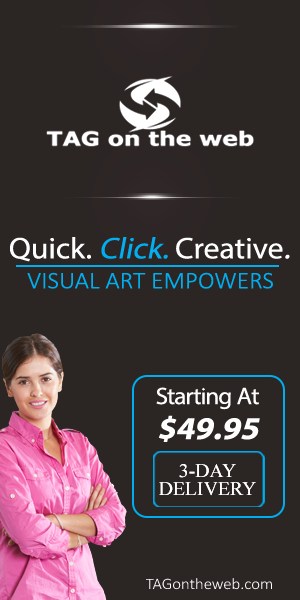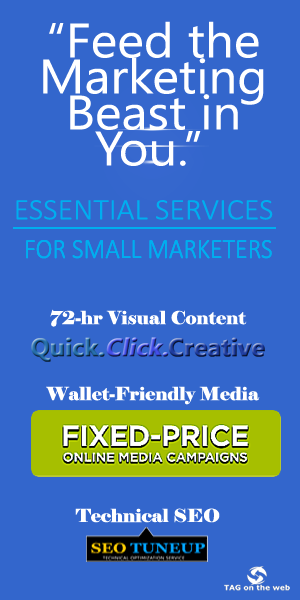SMALL MARKETER: Digital Creative Cheatsheet

Small marketers know the demanding requirements of social media and search optimization activities. Relentless content generation and seemingly a negligible or unmeasurable payoff. Online advertising, by contrast, respects the marketer’s time requiring an upfront skilled effort but once established, online campaign requires little tending until performance review time. That review can be as frequent as daily if so inclined. But that’s an expert’s job. This is a digital creative cheatsheet for those who need to know.
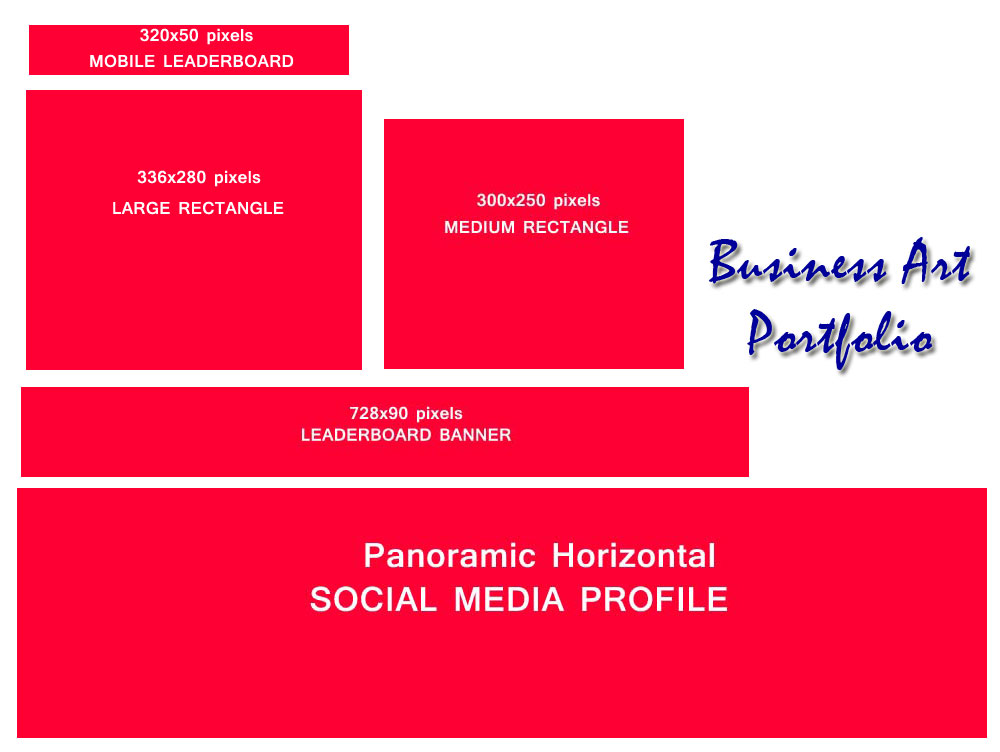
Visual Content for Business
A periodic review of campaign results brings refinements to both media and message, always with the goal of improving outcomes. For small marketers, the overwhelming benefit of online advertising is less work, more real business results. That’s Dollars and $ense.
Internet Media buying is handled by high-speed computers that efficiently direct ad messages to their very best prospects. Thus almost guaranteeing more site visits, potential new customers, and measurable outcomes.
With internet media now in the realm of affordable and with a website ready for company, the small marketer’s attention must turn to a message. It’s important to know the creative options out there to exploit the Online Advertising opportunity.
TEXT ADS
One visit to Google and you’ll see the dominant type of online ad, the Text Ad. These 4 lines of ad come-ons are surprisingly effective. People click on text ads and get taken to a website that’s primed and goal oriented for business whether that is making a sale or making a first impression to a potential new client.
A text ad’s Page 1 presence on search engines is crucial but there is only so much room at the top. The other way to deliver an online message allows the marketer to visually showcase products and personality using display image ads.
IMAGE ADS
Display image ads entice customers with sight, motion, and even sound. Google recommends that advertisers have 3-4 image display ads for a campaign. People’s attention spans are minute especially online.
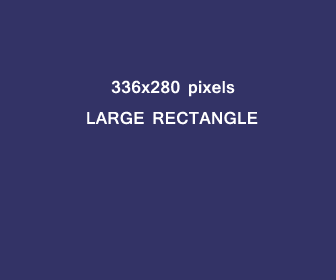
This is a large rectangle canvas
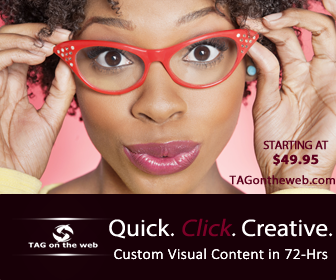
This is large rectangle completed ad
Multiple ads prevent message boredom. They also allow the advertiser to approach a sales message from slightly different angles, deepening and dimensionalizing the ad message and directing customers to different URL pages within a website.
Google rates the quality of display ads and factors that into site rank on search results. Google’s Quality Score is a measure of how relevant a display ad and its destination URL are to the search. Better ads get charged less and get better positioning on the page.
The size and formats allowed for digital advertising are governed by the Interactive Advertising Bureau (IAB). Standardization helps advertisers and online publishers conform to predetermined ad dimensions like the popular inline ad space, the 300×250 pixel or Medium Rectangle. Over time, some sizes have become standards.
Online ad formats are video, rich media, display ads. While text ads sell with words, and display ads sell with pictures, Rich Media ads offer ways to involve an audience with an ad. These ads can expand, float, peel down, etc. Static display ads offer more limited interactivity but are by far the most popular ad format. Some of the universal ad units in use are previewed below but may not appear in actual pixel sizes.
Horizontals
Another common digital ad is the horizontal banner (also known as a Leaderboard) that is used at the top, middle or bottom of a web page. It’s always best to be higher up on a web page. The web space considered above the fold is considered more valuable than the space that requires the action of scrolling.
Like an outdoor billboard message, the digital horizontal ad message has to be succinct. Horizontal is best when static or animated and in either of those formats, they make a big impact.

This is a 728×90 Pixel Leaderboard Banner
Verticals
This is a Half-Page Vertical Ad
The tall vertical is useful when you want to double your message presence visually.
It is available as a Half-Page unit (300×600 pixel ad shown here) as well as a Wide-Skyscraper ad unit (120×600 pixels) which is one of the four ad units in IAB’s Universal Ad Package.
It’s longer length ensures the ad message remains in sight as a reader scrolls down the web page to read the more editorial content of interest.
Selecting the right ad size has to do with the creative and business need as much as it has to do with options for placement.
Different size ads allow the marketer more creative license. The smaller overall canvas for digital ads means the marketer is almost forced to streamline and focus a selling message in deference to both the medium space limitations in advertising but also the minimal attention span possible from active web surfers.
Social
Often there is a need for a large space digital ad unit online. Social Media company pages are such a need. There are known as Panoramic display ads because they dominate the web page visually. Panoramic establish a brand presence like no other image size and are the key creative required for social media pages on Facebook, Twitter, and Google+.
Fifty-five percent of small businesses maintain a Facebook page but few of them have proper creative for their cover page! Whether used as a social media cover page or as a dominating ad unit displayed on a website, panoramic display ads impress.
BEST PRACTICE:
Every business with an online presence even if just a brochure site should have an inventory of digital creative ready for unexpected sales opportunities and routine branding. BONUS: Image ads can improve site rank on search engines and make great content for social media updates.
